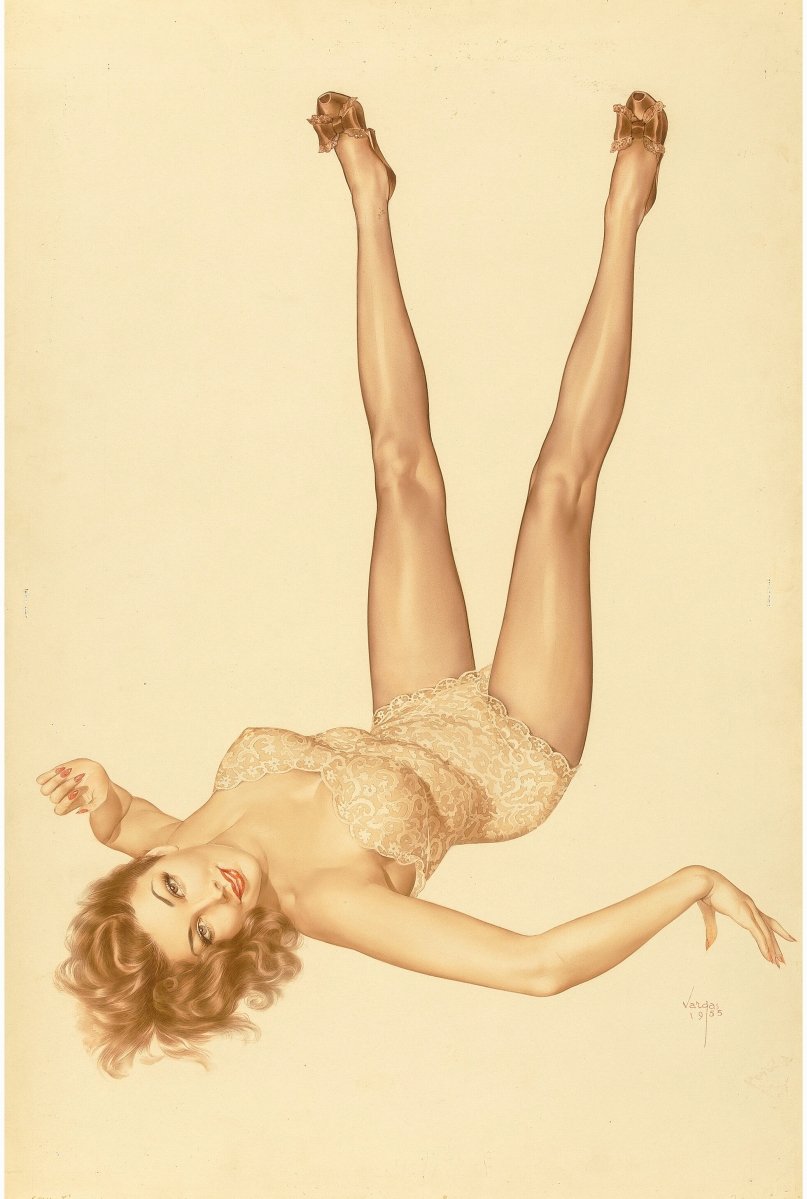DALLAS – More than a dozen bids drove Alberto Vargas’ “Mara Corday, True Girl” from February 1952 to $100,000 to lead Heritage Auctions’ Illustration Art Auction on April 30. Collectors may recognize this as one of the most iconic pinup images ever created, with the model posing in the present work as the classic V-leg calling card of the artist. Vargas utilized this composition as his signature on letterheads, business cards and advertisements. However, what enthusiasts might not realize is that the sitter for his letterhead, famed actress and model Mara Corday, posed for this image twice – first in 1947, and again in 1952. The first version, with Corday’s face obscured by her hand, was signed “Varga” and therefore, lost to Esquire magazine. After leaving the magazine in 1946, Vargas sued Esquire for the rights to his Varga Girls. The legal battle lasted for four years.
Corday first sat for Vargas in 1947. The artist used this image for his 1948 Varga calendar and reinterpreted the sketch as letterhead, business cards, etc., for his newly created Varga Enterprises. In 1950, the artist not only lost the rights to any of his artwork utilizing “Varga” – including 162 pinups painted for Esquire and the 1948 Varga calendar with original Mara Corday image – but also the use of the name, his name, itself. In 1950, Vargas was jobless, his wife ill, and on the verge of losing his home, prompting him to create a series of 12 nudes later known as the “Legacy Nudes.” The artist then sent transparencies of these nudes to every men’s magazine he could find, including True magazine, looking for work. He explained to the art director, Al Allard, that he was not legally allowed to use the Varga name but Allard didn’t care – he was interested in the art, not the name. Esquire sued the artist for the works signed “Vargas” in True, but ultimately failed. This win and the publication of his nine “True Girls,” including the present work, revitalized the artist and his career. Perhaps that is why the artist returned to Corday, to recreate the original V-leg pose. The present work illustrates the artist reclaiming his art and his name – V is for Vargas, not Varga.
This painting was reproduced on the King of Spades card in the deck of cards first published in 1950.
A more extensive sale recap will follow in a future issue.





